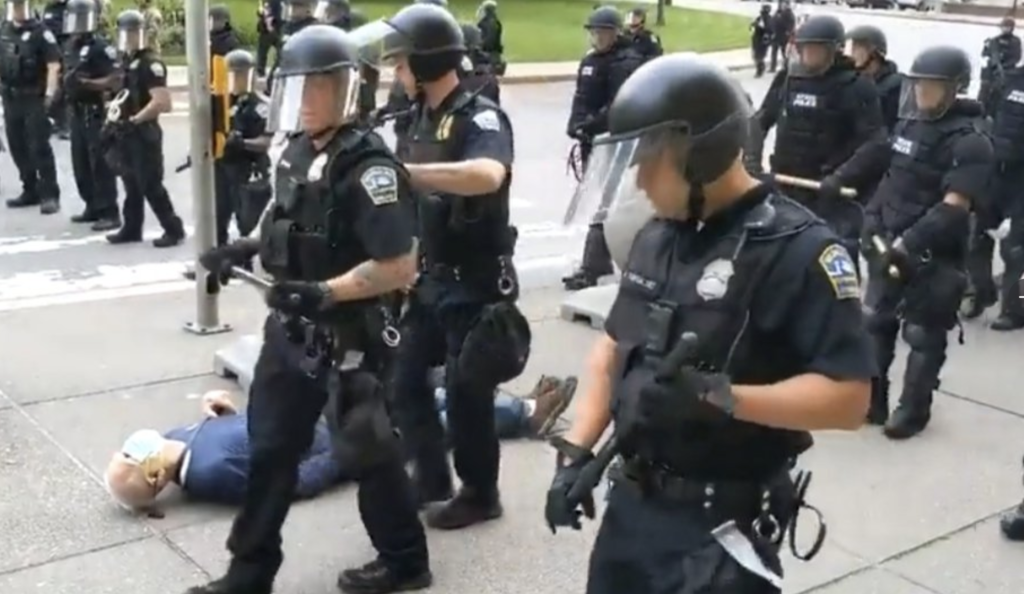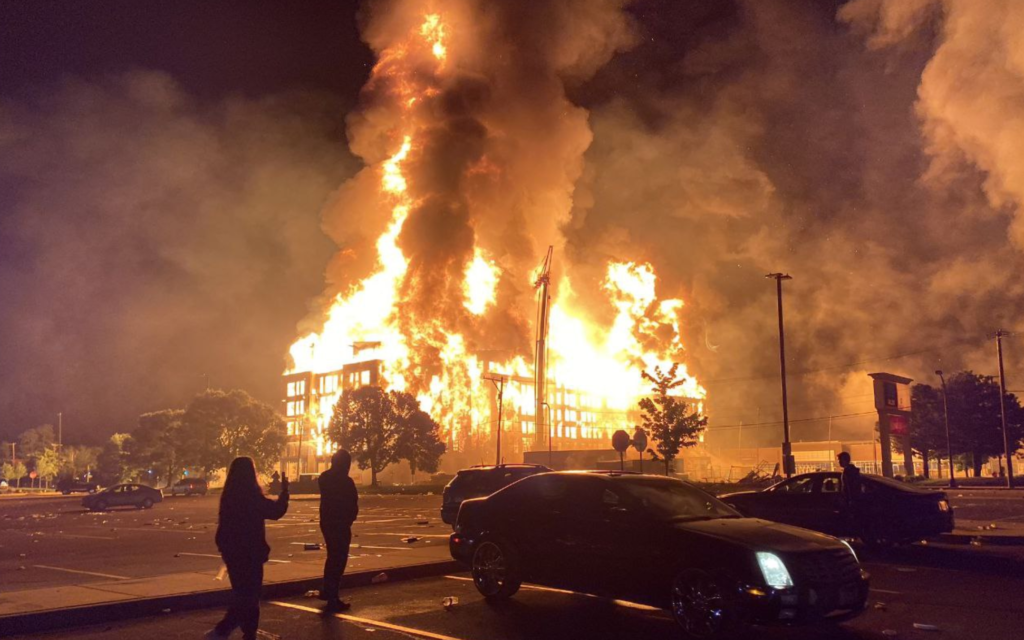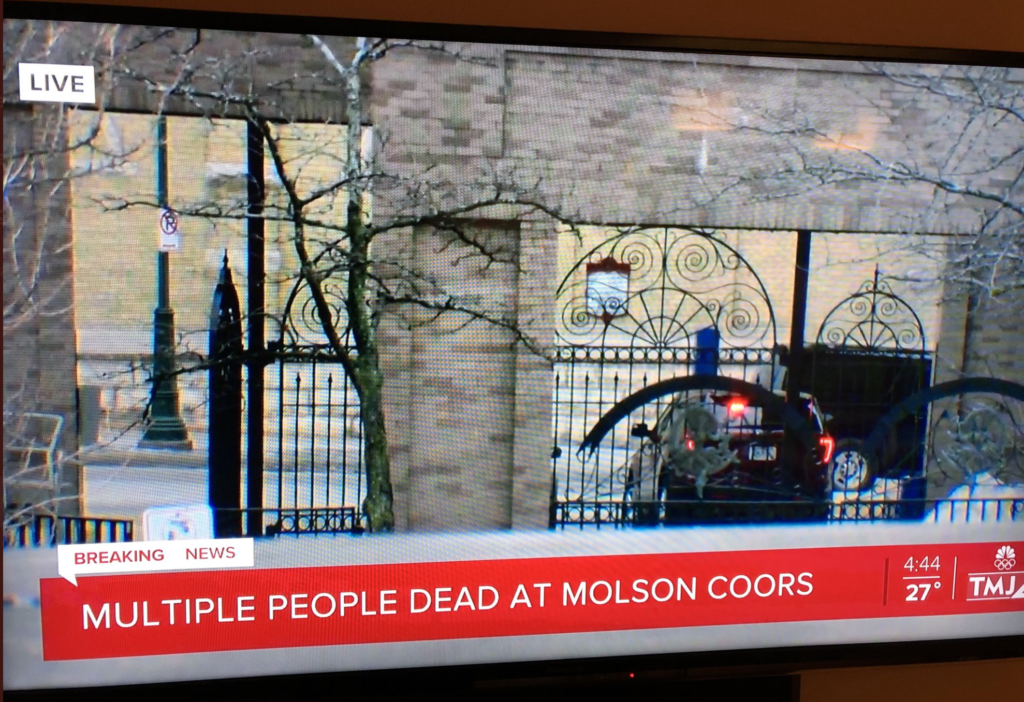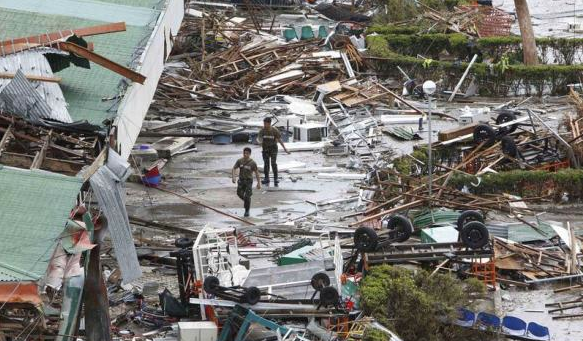Over 10,000 Feared Dead in Philippines Disaster
10 Nov, 2013
One of the most powerful storms ever recorded killed at least 10,000 people in the central Philippines, a senior police official said on Sunday, with huge waves sweeping away coastal villages and devastating one of the main cities in the region.
Super typhoon Haiyan destroyed about 70 to 80 percent of structures in its path as it tore through Leyte province on Friday, said police chief superintendent Elmer Soria, before weakening and heading west for Vietnam.
As rescue workers struggled to reach ravaged villages along the coast, where the death toll is as yet unknown, survivors foraged for food or searched for lost loved ones.
“People are walking like zombies looking for food,” said Jenny Chu, a medical student in Leyte. “It’s like a movie.”
Most of the deaths appear to have been caused by surging sea water strewn with debris that many said resembled a tsunami, leveling houses and drowning hundreds of people in one of the worst disasters to hit the typhoon-prone Southeast Asian nation.
The national government and disaster agency have not confirmed the latest estimate of deaths, a sharp increase from initial estimates on Saturday of at least 1,200 killed by a storm whose sustained winds reached 195 miles per hour (313 km per hour) with gusts of up to 235 mph.
“We had a meeting last night with the governor and the other officials. The governor said, based on their estimate, 10,000 died,” Soria told Reuters. “The devastation is so big.”
About 300 people died in neighboring Samar province, where Haiyan first hit land on Friday as a category 5 typhoon, with 2,000 missing, said a provincial disaster agency official.
Nearly 480,000 people were displaced and 4.5 million “affected” by the typhoon in 36 provinces, the national disaster agency said, as relief agencies called for food, water, medicines and tarpaulins for the homeless.
International aid agencies said relief efforts in the Philippines were stretched thin after a 7.2 magnitude quake in central Bohol province last month and displacement caused by a conflict with Muslim rebels in southern Zamboanga province.
Witnesses and officials described chaotic scenes in Leyte’s capital, Tacloban, a coastal city of 220,000 about 580 km (360 miles) southeast of Manila which bore the brunt, with hundreds of bodies piled along roads and pinned under wrecked houses.
The city lies in a cove where the seawater narrows, making it susceptible to storm surges.
The city and nearby villages as far as one kilometer (just over half a mile) from shore were flooded, leaving floating bodies and roads choked with debris from fallen trees, tangled power lines and flattened homes.
Many Internet users urged prayers and called for aid for survivors in the largely Roman Catholic nation on social media sites such as Twitter.
President Benigno Aquino said the government had deployed 300 soldiers and police to restore order and that he was considering introducing martial law or a state of emergency in Tacloban to ensure security.
Reuters
Mentioned In This Post:
About the author
Related Posts
-

The People Have Had Enough #EndSARS
-

Another Day, Another Unarmed Man Killed By Police
-

We Are Sorry Breonna, We Know This Is Not Justice!
-

Sorry Vanessa, America Failed You!
-

Does Resisting Arrest Equal Death?!
-

They Did This KNOWING Cameras Were Rolling
-

Minneapolis Is Burning
-

Coward With A Gun Kills 5 at Work
-

Looks Like Trump Broke The Law
-

A Gunman Walked Into The Wrong Church










